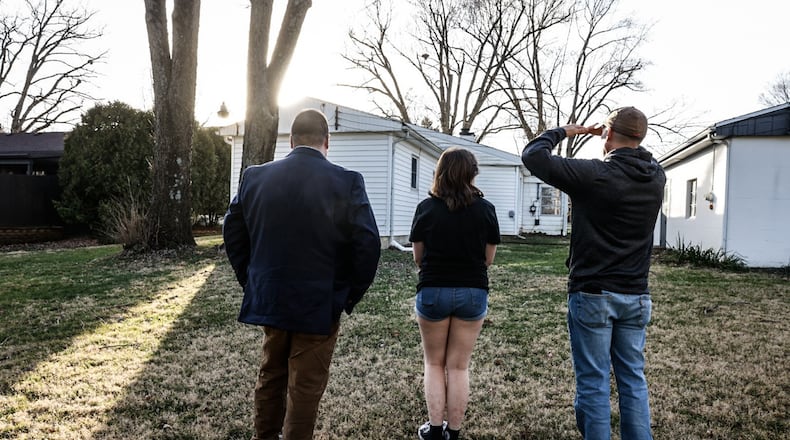Just in December, there were 1,100 sales.
Greg Blatt, Dayton Realtors president and the director of and broker at Keller Williams Advisors’ KW Commercial, said that decline was anticipated “largely due to the fact that mortgage interest rates jumped up significantly in a very short period of time.”
Credit: JIM NOELKER
Credit: JIM NOELKER
Blatt said he believes the jump in interest rates “kind of gave consumers a little bit of a shock” because they were used to the interest rates that were artificially low, down to about 3% or lower.
“I think the 20-year historic average was somewhere around 7.3%, and the 50-year historic average was somewhere around 7.8(%) and some change,” he said.
Even though today’s rates are below the historic averages, it doesn’t feel that way, Blatt said.
“Consumers go on emotion and feeling, and it feels like the sky is falling, so they backed off,” he said. “Part of that, too, is the fact that when rates rise that does some people out of the affordability range. They don’t have the same buying power that they had the same time last year.”
“You couple that with low inventories to begin with, and (there’s) probably a little bit of buyer fatigue.”
The recent decline in home sales was “an opportunity for them to take a little pause and a little breather,” Blatt said.
Complicating matters is the fact that housing inventory remains low and sales velocity is down, he said.
“We’re still selling houses, we’re just not selling them quite as quickly,” he said.
Credit: JIM NOELKER
Credit: JIM NOELKER
In addition to people not buying as many homes as they used to, not as many people are putting their homes on the market.
Entries of single-family homes and condos during January decreased 6% compared to January 2022, with 1,022 new listings added last month, according to Dayton Realtors MLS. The total available active inventory stood at 1,175 at month’s end.
“I’ve been doing this count for 42 years, and I’ve seen seven major shifts in the market over those 42 years and in a lot of ways this this market is a little bit confusing,” Blatt said. “Usually when you have a shift, all of the data and indicators are pointing in the same direction, and in this case, they’re not. We’re getting we’re getting conflicting data points.”
Blatt pointed to the amount of sold properties being down by 29.5% year over year and the total sale price with it (down 24.4%), but the average sale price increased to $227,182, a 7.3% increase, while median price rose to from $190,000, a 11.1% increase.
“The indicators are saying look the market still strong. It’s not going away,” he said. “We’re not heading into any kind of a bubble or a crash, but we’re seeing a correction into more than normal market and the velocity of sales are slowing a bit because of the interest rate issues and the inventory issues.
Blatt said he would anticipate activity picking up in the next several months.
“I think the buyers are starting to realize that the interest rates aren’t as bad as they seem or feel like I think we’ve kind of adjusted to the new normal interest rate,” he said. “And we’ve got a lot of people that are getting requalified and and now starting to come back into the market realizing that you know, the interest is what it is. It’s going to be a little bit higher. than what they could have gotten last year.
Activity also slowed in Ohio. Homes sales in January reached 7,167, a 25.3% decrease from the 9,600 sales recorded during the month a year ago, according to Ohio Realtors.
The average sales price across the state in January reached $234,794, a 3.2% increase from the $227,502 level posted during the month in 2022.
About the Author



